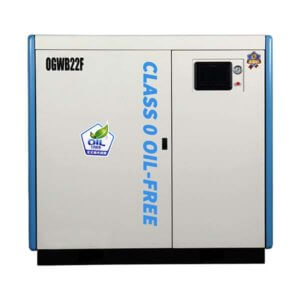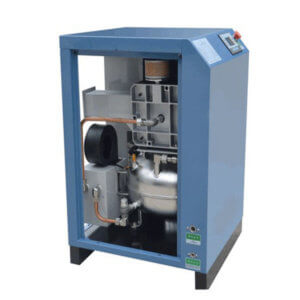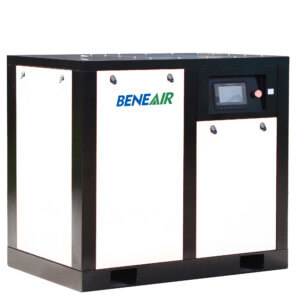Contents
The efficient functioning of the rotary screw compressor in your commercial or industrial plant is vital for your work. However, even if you provide regular maintenance and perform repairs when necessary, sooner or later, it will need to be replaced with a new one.
Although it can be challenging to see an old friend go (after all, rotary screw compressors are known for their longevity), there are steps that you can take before buying replacement parts that may result in extending its life expectancy.
Expenditures for compressed air systems are typically a plant’s second-highest expense, exceeded only by energy costs. So it’s essential to consider all the factors that contribute to achieving the most cost-effective compressed air system possible.
One way to achieve this goal is by doing an annual review of your compressed air system and its components. This review should include an assessment of your compressor’s condition and performance, as well as a study of the facility’s compressed air demand profile. You may find that specific measures you’ve taken have resulted in increased efficiency and longer compressor life.
Tips for Extending Air Compressor Life
Tips for Extending Air Compressor Life
1) Keep your compressor clean
Compressors are susceptible to dust and dirt build-up, particularly if they are not adequately sealed. This can cause your compressor to fail more quickly and will also make it require more energy to operate. Cleaning of the compressor should be done at least every three months (more often for dusty areas).
2) Change or clean your air filters regularly
Another essential maintenance task is changing or cleaning your compressed air filters regularly. The easiest way to do this is with a programmable logic controller (PLC), automatically adjusting the filter according to a predetermined time interval (e.g., every 30 days). If you have multiple air compressors, they may all share the same PLC so that one single action changes all of their filters simultaneously.
Also, check the condition of the air filters and replace them when necessary. Dirty filters will reduce the life of your compressor and increase energy costs.
3) Control humidity levels
Compressed air systems can also be adversely affected by high humidity levels. This is because the water vapor in humid air can cause parts to rust and corrode, leading to equipment failure. To control humidity levels, use a dew point controller to measure the moisture content of the compressed air and operate the compressor only when necessary.
4) Balance your system
A properly balanced compressed air system will use less energy and longer compressor life. There are several ways to achieve this balance, but one simplest is installing an automatic bypass valve on your receiver tank. This valve can balance the pressure in your system according to the demand at any given time.
5) Perform regular inspections of bearings, seals, and other parts that are vulnerable to wear
Although most commercial compressors are designed to last for at least three years without requiring significant repairs, you should still check your equipment regularly for signs of metal or oil leaks. Check with your compressor manufacturer to determine when it’s best to replace the oil seal on your air compressor. Oil seals are designed to be replaced every two years, but this may vary depending on how often you use your unit.
6) Train plant personnel
If operators don’t understand how compressing air works or why specific steps in its production are necessary, they may not take proper care of the system. General awareness of those factors will ensure that your compressed air system runs as effectively as possible and avoids damage from neglect or carelessness.
7) Monitor consumption levels to identify waste
Monitor consumption levels regularly to recognize trends and find out where there may be a problem. If consumption is more significant than expected, it could mean that too much air is being used or that a significant leak has developed.
8) Balance consumption against demand
The best way to determine how much-compressed air your facility needs is through an energy audit, which identifies ways to minimize energy consumption through effective building management. After balancing consumption against demand, you’ll have a better idea of what size compressor(s) might be necessary for the future.
9) Reduce pressure to reduce consumption
If you can’t balance the demand against supply, reducing the compressed air system’s operating pressure is another way to cut your energy costs. While this will decrease the efficiency of some compressors and require them to run longer than average, it may still be a good trade-off if increased production won’t offset the additional energy usage.
10) Use alternative energy sources
Another method for reducing energy use and expense is by supplementing or completely replacing your compressor with renewable power sources such as solar and wind. By doing so, you’ll not only increase sustainability but also lower long-term costs for maintenance and equipment replacement.
11) Invest in green technology
Green technology has helped many manufacturing companies improve productivity while reducing costs, and it could do the same for your facility. Investing in green technology can achieve greater sustainability by improving building management with automated sensors, intelligent lighting controls, and more efficient heating, cooling and ventilation systems.
If you want to increase the life span of your compressor, you should know the following tips before buying:
- Ask the dealer of your compressor what type of lubricating oil is needed for the air end and how often it needs to be changed.
- Ask the dealer whether compressed air filters with water traps need to be replaced and, if so, how often.
- Ask the dealer whether compressed air filters with water traps need to be replaced and how often.
- Suppose you want to save on overall energy usage and operating costs. In that case, you might want to install a flow meter that measures actual demand instead of relying on an unmonitored regulator valve. This will give you accurate information about how much air your facility is using at any given time and allow you to make sure it’s used as efficiently as possible.
Closing
All in all, the process of ensuring that your compressed air system runs as efficiently as possible requires a multifaceted approach involving expert service and environmentally friendly technology. You can reduce energy usage and operating costs while maximizing productivity and increasing expediency by following these tips.









Leave A Comment